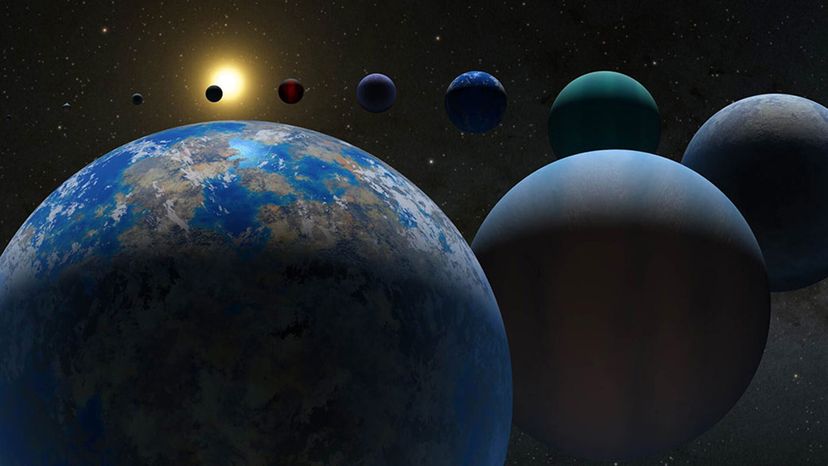Planets... They are something found almost everywhere in the Universe (maybe even in Black Holes). These humble planets are the best suited to harbour life (the moons of planets in case of gas giants like Jupiter.).
Here, I am going to discuss about exoplanets, how they are discovered, and some interesting facts.
What are Exoplanets?
An Extrasolar Planet or Exoplanet, is any planet outside the Solar System.
The planet could be orbiting a star, or be just floating freely, orbiting the centre of its galaxy. Such freely floating planets are called Rogue Planets and are generally harder to find than other exoplanets.
How are Exoplanets Found?
It is very hard to find exoplanets by just looking at the parent star, as its glare hides any form of radiation from the planet.
However, there are a few methods which are successful in discovering them-
1. Direct Imaging
Like the name suggests, this refers to looking at a star directly to find some smaller specks of light that could signify exoplanets.
In this method, first the brightness of the parent star is reduced using technology, and then, the exoplanets are searched for.
Credit: NASA
However, it is not very effective as the light from the parent star is brighter than that of the planet by a factor of more than a million. Hence, all planets discovered using this method are larger than Jupiter and orbiting their parent stars at very large distances.
Only 68 planets have been discovered as of February 2024 using this method.
2. Transit Method
This is the king of all methods, and my personal favourite. It involves looking for a slight dimming in the brightness of the star as the exoplanet transits (passes in front of) it.
Credit: NASA
Such methods can be used to find out various things about the planet like its orbit, its size, and by looking at the amount of light passing through its atmosphere, the composition of its gasses.
The Kepler Space Telescope, launched by NASA looks for exoplanets in this way and 4,153 planets have been found using this method as of February 2024.
3. Gravitational Microlensing
This is a form of gravitational lensing, but on a smaller scale. It is based on the concept that, when a planet passes in front of its parent star, it acts as a 'lens' and magnifies the light of the star leading to an increase in the brightness of the star over a period of about a month, and then its subsequent dimming.
Credit: NASA
This method is useful to find planets orbiting stars between distances of 1AU to 10AU, along with rogue planets. As of February 2024, 210 exoplanets have been discovered by this method.
4. Radial Velocity
Stars have massive gravitational forces, way larger than those of planets. However, even planets have enough gravity to slightly change the position of the star, causing it to 'wobble'.
The gravitational force of the planet(s) causes the star to orbit a particulat point known as the centre of gravity. These wobbles cause the colour of light coming from the star to keep changing due to Doppler shift.
Credit: NASA
Small planets like Earth, Venus, etc. make the stars wobble only a bit, while large ones like Jupiter make the stars wobble quite a bit. Hence, the Doppler shift varies, helping astrophysicists find out the size of the planet(s), the number, etc.
1075 exoplanets have been discovered by far using this method.
5. Astrometry
Astrometry is closely related to the Radial Velocity method. Like mentioned, the planets cause the stars to wobble. This wobble can be detected by telescopes as a change in the apparent position of the star, with respect to other stars in the sky.
Credit: NASA
However, these movements are very minute, making this an extremely hard task. It requires precise optics, and the refraction by the atmosphere doesn't make things any easier. Due to this, only 3 planets have been discovered using this method.
Interesting Facts
- As of 2023, more than 5,500 exoplanets have been confirmed and another 10,000 potential exoplanets have been discovered but not confirmed.
- Most of these exoplanets have been discovered by the Kepler Space Telescope of NASA.
- Trappist 1 is a star having the most number of exoplanets ever discovered in a single star system, at 7 planets.
That is all for this post. Hope you enjoyed it. Any reviews, suggestions or comments are welcome and can be posted in the comments section.
Cheers,
Aarav Iyer
Thumbnail credit: howstuffworks (Science)
.png)

